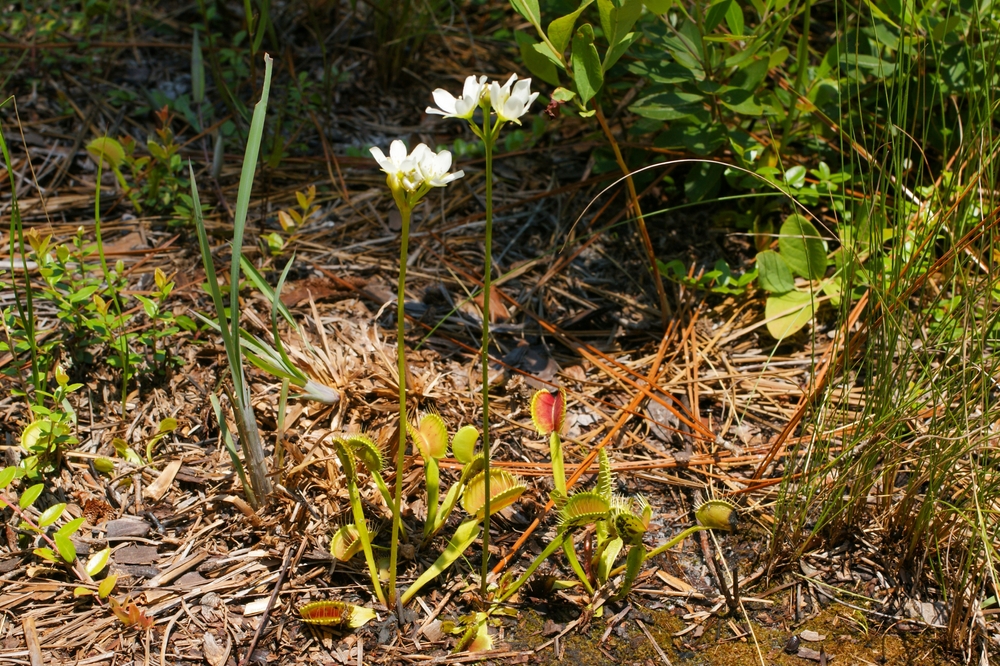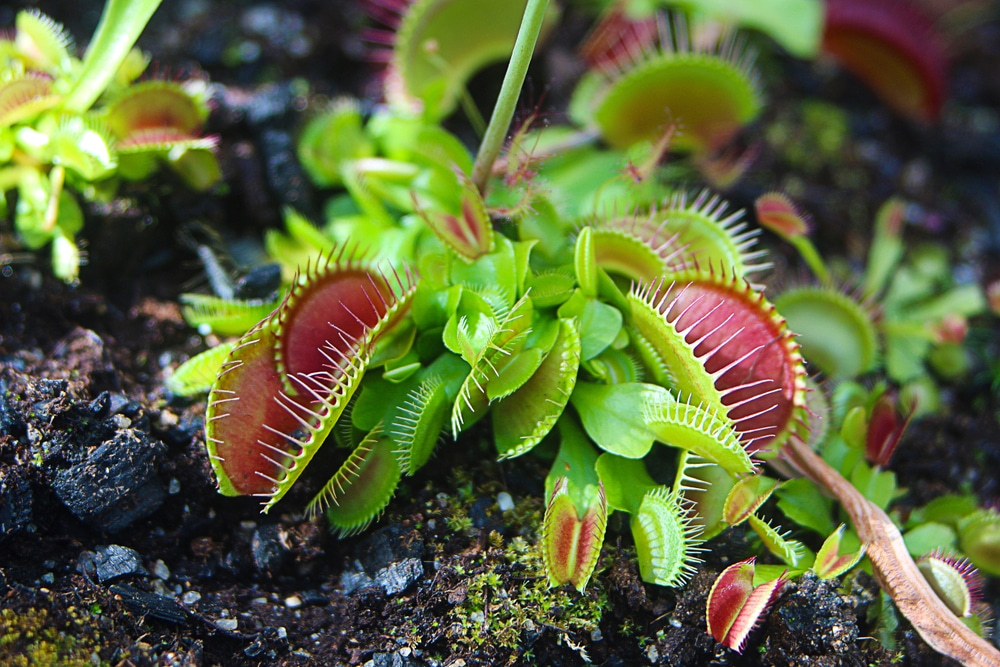Venus flytraps do flower. In the northern hemisphere, they typically flower from May to June and produce fruit in the following months. They reproduce both sexually through flower pollination and asexually through rhizome division.
Why Do Venus Flytraps Flower?
Venus flytraps flower once they reach maturity at about 3 to 5 years. Flowering is necessary for reproduction when the plant is in the wild. However, when kept as houseplants, there is little need for them to reproduce at all.
The flowers of the venus flytrap are white and have green veins and a green center. Flowers grow on stems 8 to 12 inches tall, keeping pollinating insects away from the traps–which are much lower.
What To Do When Venus Flytrap Flowers?
Provided you’ve caught the plant growing a flower stem early on, there are two choices you can make: leave it or cut it. Most recommend cutting the flower stems after they reach a height of around 5 cm. Flowering is taxing on even healthy plants. Producing a flower can weaken the plant for several months or even a year and may even kill it.
Once the plant has already grown the flower stem to or near completion, there is little you can do outside of watch and hope the plant can recover. Knowing that venus flytraps flower and when you should cut the flower stem can prevent your plant from becoming weak in the future—provided it survives this first occurrence.
Venus flytraps in the wild can recover quickly from the amount of energy expended by producing a flower, but cultivated venus flytraps do not have the perfect conditions to facilitate a fast recovery. Because of this, beginners who are new to the plant may not provide conditions that allow the plant to recover after flowering.
Another option is attempting to pollinate and harvest seeds from your plant. While this can be done, it is not practical or reliable; growing from seed takes a long time and can be difficult. Not to mention that pollinating the plant on your own may not always result in the production of seeds in the first place.
Experienced growers may propagate in this fashion. Even then, flowering is taxing on the plant and can result in it either being weakened (temporarily or sometimes permanently) or dying.
When you choose to cut the flower stem, you may be able to propagate using just that. Flower stem propagation is one of the several ways of producing new venus flytraps and usually is easier than attempting to grow from seed.
As your plant grows, it will need to be divided and repotted (or just given a soil change) about once a year. Dividing the plant will allow you to take leaf pullings, another easy way of propagating your venus flytrap.
Are Venus Flytraps Flowers?
Venus flytraps fall into the category of flowering plants. Specifically, it is classified as a carnivorous plant and is a part of the family Droseraceae. Interestingly, the venus flytrap is the only species in its genus. There is also only one species of venus flytrap. All varieties are bred horticulturally, meaning they are cultivars.
More Information
Another important thing to know is that the venus flytrap is currently being considered by the United States Fish and Wildlife Service for the status of endangered species.
The venus flytrap is native to a very small portion of North Carolina and South Carolina. This is the only location in the world the plant is found naturally—though efforts to naturalize it in other areas have been somewhat successful. Because of its already limited range, human interference in natural forest fires, and a significant amount of illegal harvesting, the plant is struggling to survive in its native environment.
When purchasing a venus flytrap, it is important to buy only those that come from reputable nurseries and not plants taken from the wild. This marvelous plant deserves to survive in its native land.
Conclusion
Venus flytraps are very interesting plants. Many people may not know all of the neat and unique aspects of them, including that they flower. Owning one of these plants can be very rewarding.

